Have you ever heard about “Heset”? Heset means “Music” in ancient Egyptian language. As music highlights the importance of the events and creates the proper emotion, ancient Egyptians have long valued music in their daily lives, and it was a key aspect of our Egyptian history; from religious ceremonies and personal celebrations to worship.
Musicians and vocalists were frequently depicted on the walls of the temples and tombs, singing and performing; temple musicians were the ones who held the highest positions. They played on various instruments; chordophones, aerophones, Idiophones, and membranophones.
Have a glance at our ancestors’ musical instruments below.
Harp
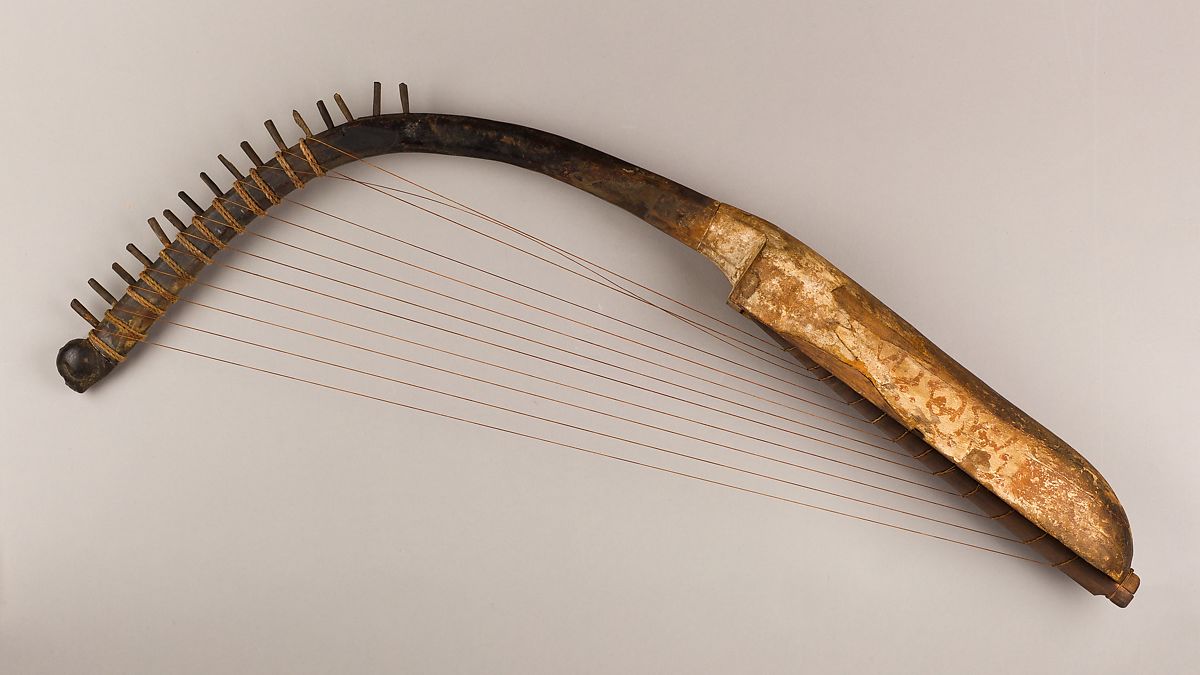 Yes, harps are that old! The Egyptian harp, or “Benet”, is one of the oldest and most popular musical instruments in ancient Egypt. Harps were often made out of precious materials, they consisted of a long wooden neck with a curved soundbox with strings attached, producing tunes by plucking the strings; the number of the strings varied according to the size of the harp ranging from 5 to 7 strings.
Yes, harps are that old! The Egyptian harp, or “Benet”, is one of the oldest and most popular musical instruments in ancient Egypt. Harps were often made out of precious materials, they consisted of a long wooden neck with a curved soundbox with strings attached, producing tunes by plucking the strings; the number of the strings varied according to the size of the harp ranging from 5 to 7 strings.
Lyre
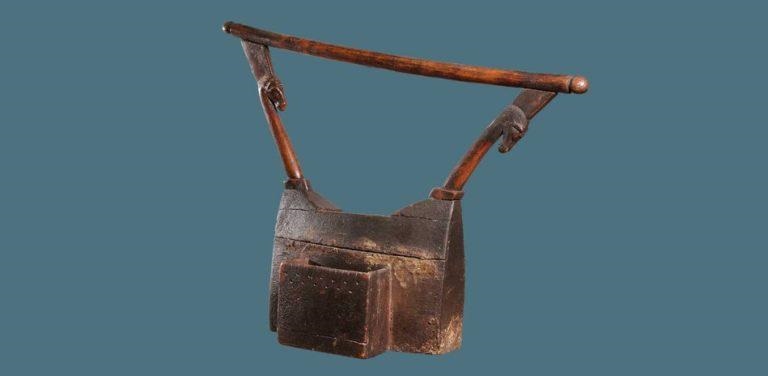 Is it a lyre or a harp? Lyres look like harps but, are much lighter, held by the players while playing, and plucked by a plectrum. Women often played the lyre, which was an accompaniment for poetry readings and ceremonies. It can be played by holding it with the strings either horizontally or vertically
Is it a lyre or a harp? Lyres look like harps but, are much lighter, held by the players while playing, and plucked by a plectrum. Women often played the lyre, which was an accompaniment for poetry readings and ceremonies. It can be played by holding it with the strings either horizontally or vertically
Lute
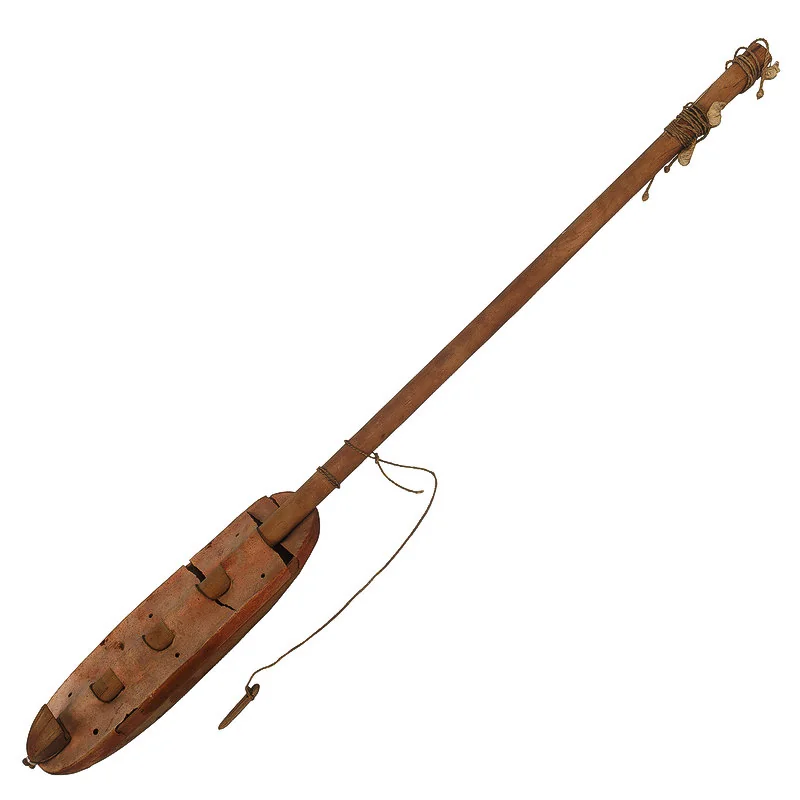 Here is another string instrument, an old version of the modern-day guitar. Long-necked lutes were more popular than short ones. Their bodies were pear-shaped or round, and had two or three strings, plucked using a pick or your fingers. Both men and women were capable of playing the lute instrument.
Here is another string instrument, an old version of the modern-day guitar. Long-necked lutes were more popular than short ones. Their bodies were pear-shaped or round, and had two or three strings, plucked using a pick or your fingers. Both men and women were capable of playing the lute instrument.
Clapper
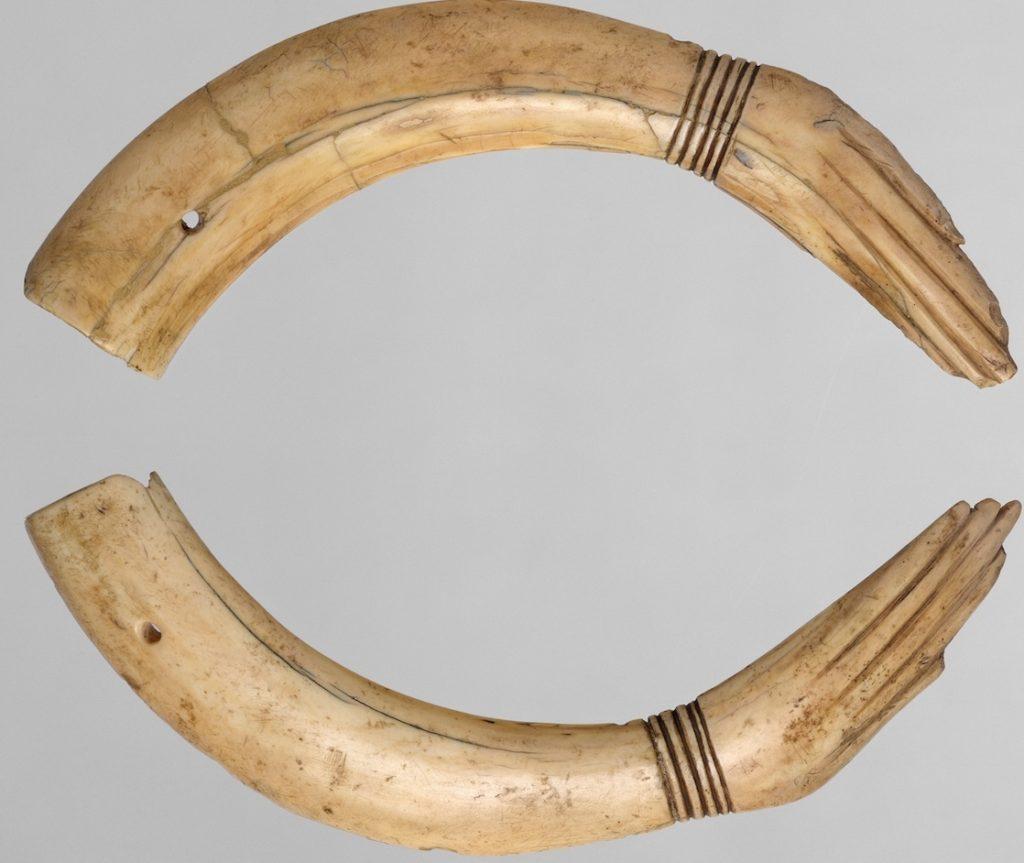 The clapper or castanet was the first musical instrument used by musicians in ancient Egypt. The clapper is a pear-shaped instrument made of hardwood like ebony or rosewood, with a string or a rope; used to bind the instrument together. It was used in numerous rituals and celebrations, their sound was believed to depict ancient Egyptians’ goddess of music Hathor.
The clapper or castanet was the first musical instrument used by musicians in ancient Egypt. The clapper is a pear-shaped instrument made of hardwood like ebony or rosewood, with a string or a rope; used to bind the instrument together. It was used in numerous rituals and celebrations, their sound was believed to depict ancient Egyptians’ goddess of music Hathor.
Sistrum
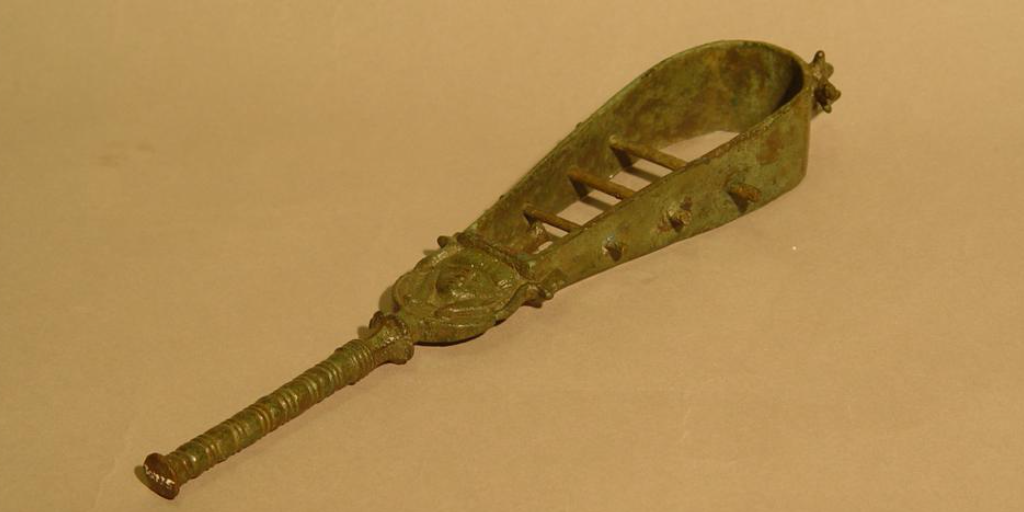 Look at its design! It’s similar to the Egyptian symbol of life. The sistrum was used in certain ceremonies, especially in worshiping Isis. It’s a percussion instrument that sounds like a rattle, usually owned by high-ranking ladies, singers, or priestesses. It consists of a U-shaped frame with a handle, unlike many other ancient instruments; they were made of metal. Interestingly, it is still used in church rituals in Ethiopia.
Look at its design! It’s similar to the Egyptian symbol of life. The sistrum was used in certain ceremonies, especially in worshiping Isis. It’s a percussion instrument that sounds like a rattle, usually owned by high-ranking ladies, singers, or priestesses. It consists of a U-shaped frame with a handle, unlike many other ancient instruments; they were made of metal. Interestingly, it is still used in church rituals in Ethiopia.
Cymbals
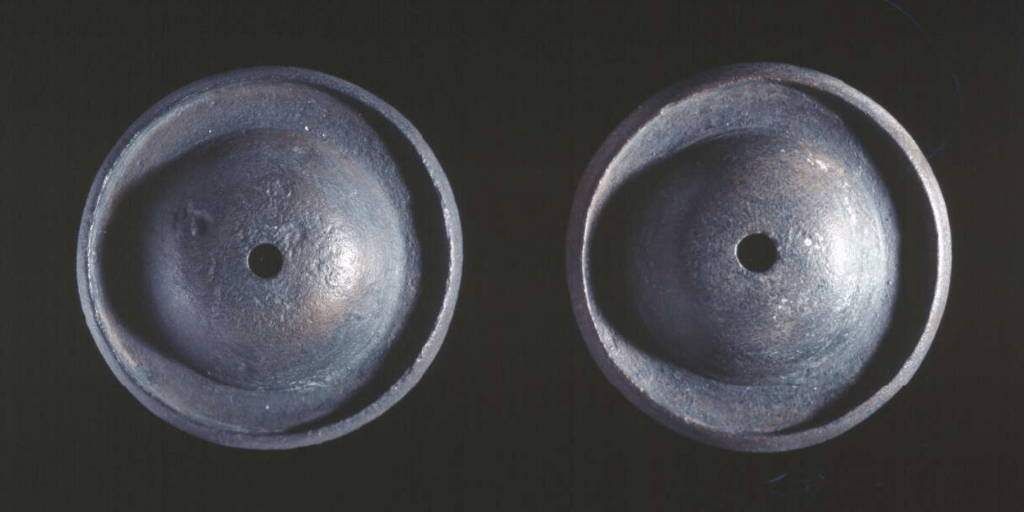 Fun fact, it hasn’t changed much over the years; the modern-day cymbals are often used as finger-held cymbals, mainly in Egyptian belly dancers’ performances. They still come in pairs of round flat metal plates that vibrate when struck together. Cymbals were one of the most important instruments in ancient Egypt, they were used to accompany drums and sistra and were widely used in military and religious events.
Fun fact, it hasn’t changed much over the years; the modern-day cymbals are often used as finger-held cymbals, mainly in Egyptian belly dancers’ performances. They still come in pairs of round flat metal plates that vibrate when struck together. Cymbals were one of the most important instruments in ancient Egypt, they were used to accompany drums and sistra and were widely used in military and religious events.
Clarinet
 Another well-known instrument, the clarinet, has survived in Egyptian folk music today as the zummâra. Clarinets could only be played by men and were a common instrument in Old Kingdom orchestras alongside harps and flutes. They were made of two parallel pipes that were connected by a string and resin, and had four to six holes in front of each tube.
Another well-known instrument, the clarinet, has survived in Egyptian folk music today as the zummâra. Clarinets could only be played by men and were a common instrument in Old Kingdom orchestras alongside harps and flutes. They were made of two parallel pipes that were connected by a string and resin, and had four to six holes in front of each tube.
Flute
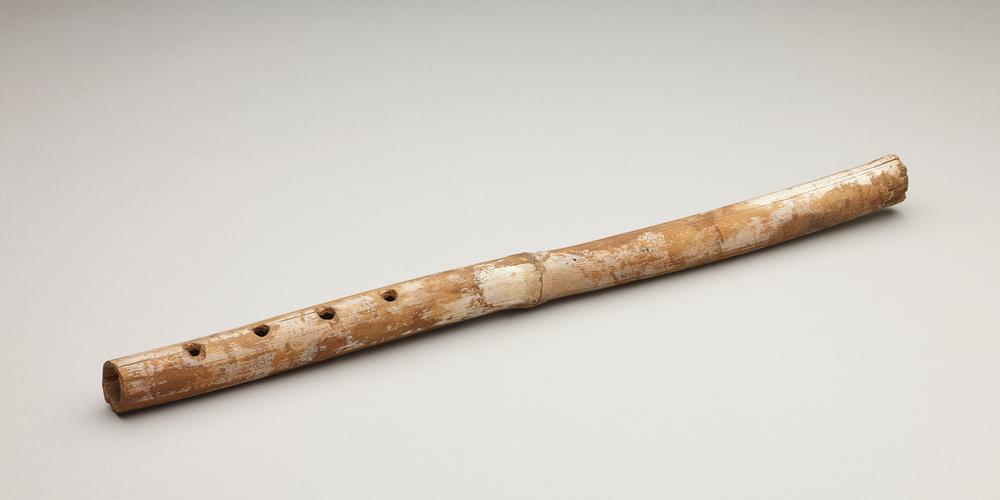 Egyptian flutes are the oldest wind instrument. The ancient flutes had three or four holes placed at the end of the instrument and could create a broad range of sounds depending on how the instrument was played. Nowadays, the instrument hasn’t changed much in terms of design, yet it is still widely used in Egypt.
Egyptian flutes are the oldest wind instrument. The ancient flutes had three or four holes placed at the end of the instrument and could create a broad range of sounds depending on how the instrument was played. Nowadays, the instrument hasn’t changed much in terms of design, yet it is still widely used in Egypt.
Trumpet
 With only one blow, a war could start. Ancient trumpets were made of wood and had a long pipe and a bell. They were used in parades and for military reasons; it was more considered as military equipment, that was solely played by men.
With only one blow, a war could start. Ancient trumpets were made of wood and had a long pipe and a bell. They were used in parades and for military reasons; it was more considered as military equipment, that was solely played by men.
Tamborine ( Riq )
.jpg) Folk and classical music lovers can easily recognize the instrument from the picture. The tambourine dates back to ancient Egypt, it’s famous for its radiant and jingling sounds. It has bronze or copper jingles that are held in place by metal pins and was mainly used in ancient religious ceremonies by female dancers, festivals, and funerals as well.
Folk and classical music lovers can easily recognize the instrument from the picture. The tambourine dates back to ancient Egypt, it’s famous for its radiant and jingling sounds. It has bronze or copper jingles that are held in place by metal pins and was mainly used in ancient religious ceremonies by female dancers, festivals, and funerals as well.
Drums
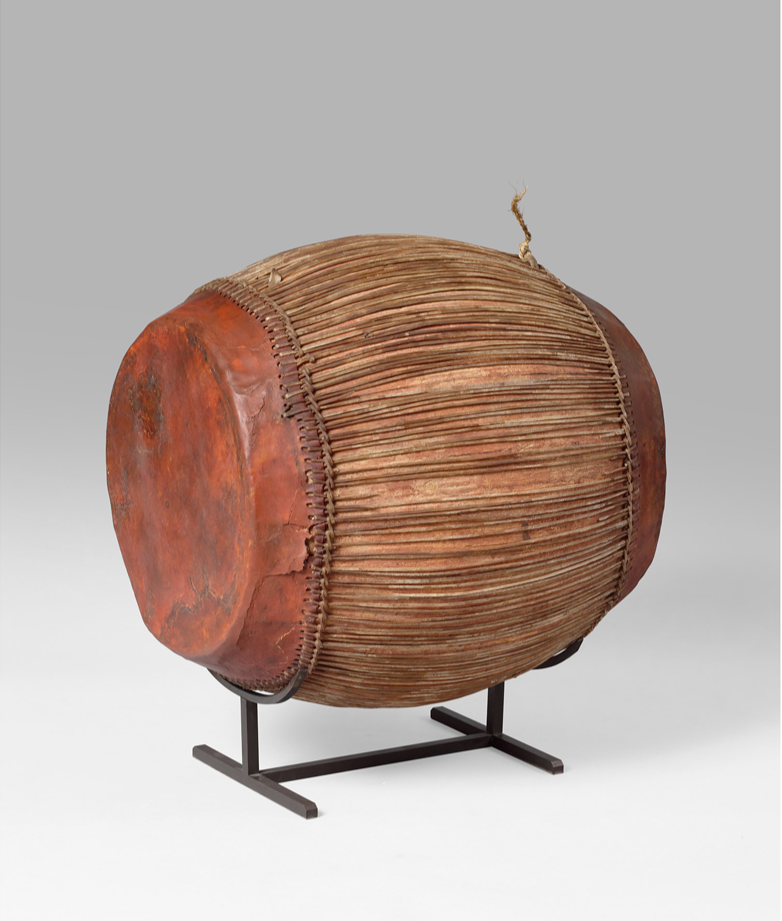 Surprisingly, the brightly painted and well-decorated drums were not used for music. In the beginning, their original purpose was for war, to give out instructions to soldiers during the darkness of battles and harmonize the rowers of boats on the Nile. Later on, it was used for music and religious purposes.
Surprisingly, the brightly painted and well-decorated drums were not used for music. In the beginning, their original purpose was for war, to give out instructions to soldiers during the darkness of battles and harmonize the rowers of boats on the Nile. Later on, it was used for music and religious purposes.









.jpg)

Comments
Leave a Comment